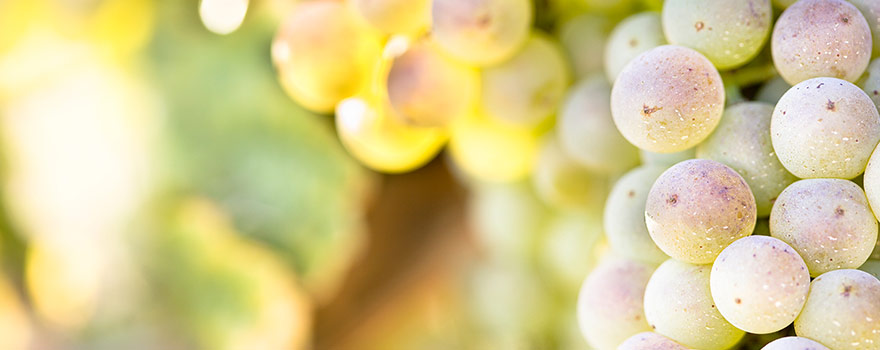
Viognier is a very trendy white variety that reaches its pinnacle in its spiritual home of the Northern Rhône’s Condrieu appellation. While Viognier is very popular now, it came close to extinction in the 1960s, largely because of its low yields and unpredictability in the vineyard. Viognier was first planted in Australia at Elgee Park on the Mornington Peninsula, followed soon after by Yalumba who have championed the variety for over 30 years.
Viognier is difficult to grow, its yields can be unpredictable and it has a small window for optimal harvest. Australia’s diverse climate results in a broad range of Viognier styles from the elegant, fragrant style to a luscious, full-bodied white wine. The distinguishing characters of Viognier include stone fruit, predominantly apricot, perfumed scents and high alcohol. Viognier responds positively to oak, adding richness to the texture and a nutty complexity that complements the apricots. Viognier is also regularly co-fermented, or blended with Shiraz to give further complexity and fragrance.
Eden Valley
Yalumba have championed Viognier since 1980 and now has the largest mature Viognier resource and the oldest commercial vines in the Southern Hemisphere from a range of viticultural regions. Yalumba’s finest Viognier is the Virgilius, which is grown in the Eden Valley.
Gewürztraminer is an aromatic white grape that is recognisable by its heady, aromatic scent. Gewürztraminer has a thick skin, which imparts high levels of phenolic compounds that give the wine a distinctive fullbodied, oily textured palate. Some winemakers deliberately offset the slightly bitter phenolic characters with some residual sugar, which when combined with the variety’s high natural alcohol, results in a full-bodied, rich wine. Gewürztraminer is widely grown throughout Germany and France’s Alsace region. Gewürztraminer arrived in Australia with James Busby in 1832 and was grown and embraced by German settlers.
The hallmarks of Australian Gewürztraminer are its lifted aromatics, offering rose petal, rose water and Turkish delight aromas, sometimes showing spicy notes. The palate is thick and flavoured with lychee, citrus fruit and an oily texture and is generally full-bodied.
In the vineyard, Gewürztraminer needs an ideal site to produce its best; generally this intensely flavoured wine performs better in a cool climate, as warm climate examples can often be flabby and high in alcohol. To produce an ideal balance of aromas and flavours, it performs best in cool pockets of Victoria, Tasmania and the Eden Valley where the conditions allow natural acidity to be retained.
The white backbone of the Rhône appellation of Hermitage, Marsanne is heavily used as a blending partner for white and red wines. Mostly blended with Roussanne (white) and Syrah (Shiraz) to make this region’s famous wines.
Marsanne has been grown in Australia since 1862. Known for its great value and ability to age well, Marsanne’s popularity has been steadily growing, particularly over the past decade.
When young, Marsanne is a rich white with a palate full of nutty, spicymelons, pears and apples. The aromas can range from luscious honeydew to tight but fleshy citrus. When older, the colour of Marsanne can deepen dramatically, while the palate will develop an oily texture with layers of honey throughout the primary characters.
Central Victorian Marsanne represents great value and has good potential to improve with cellaring. Tahbilk has long produced exceptional Marsanne, which are beautifully balanced and drink well on release. These wines also have the potential to develop richness and complex honeyed characters with bottle age.